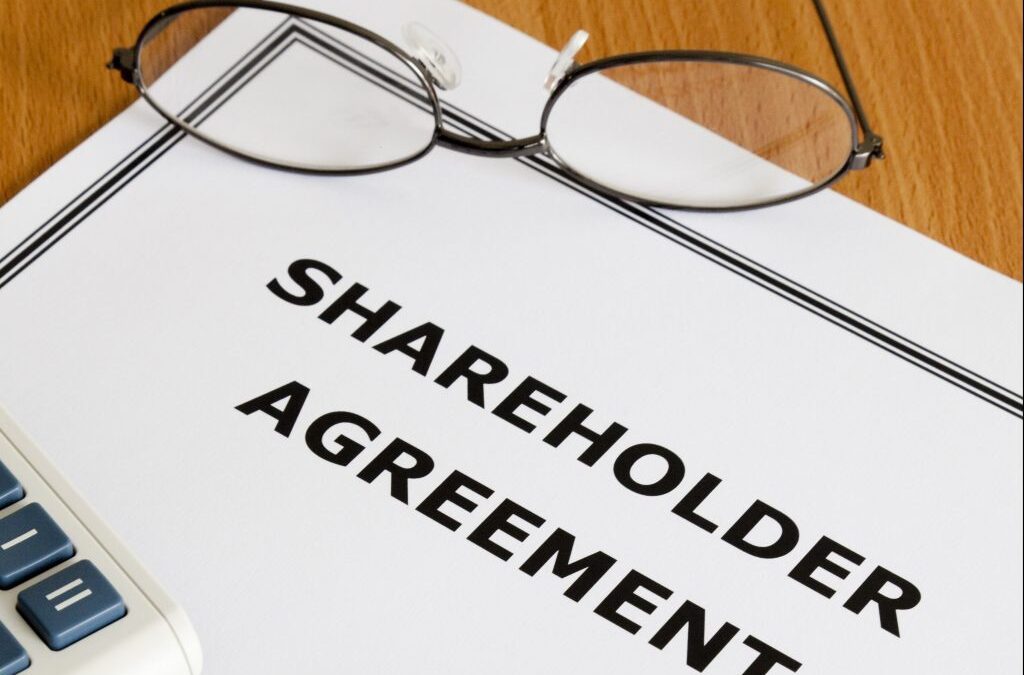When launching or growing a business with multiple stakeholders, the excitement of collaboration often overshadow the practical steps required to protect the venture’s long-term health. While partnership begins with optimism, business realities can shift quickly, and what was once a shared vision can turn into disagreement.
One of the most vital, yet frequently overlooked instruments for ensuring clarity and stability in a company with multiple owners is the shareholders’ agreement. Though often underestimated, this document is fundamental to ensuring the smooth running of a company, protecting the rights of shareholders, and maintaining harmony among those involved.
This legal document is not just a formality, it’s the backbone of corporate relationships, a crucial agreement which sits alongside the company’s constitutional document, setting out the rights and obligations, defining relationship among shareholders, protecting business interests, clarifying roles and providing mechanisms to handle disputes while ensuring the smooth operation and governance of the business.
This article examines what a shareholders’ agreement is, its essential components, and why it is a critical tool for any company with more than one owner. It also explores how such agreements promote good corporate governance, prevent disputes, protect minority interests, ensure continuity, and regulate the transfer of ownership, all of which are vital to the long-term sustainability of a business.
Understanding the Shareholders’ Agreement
A shareholders’ agreement is a private contract between the shareholders of a company. It supplements the company’s articles of incorporation by setting out detailed rules and arrangements about how the business will be operated and how key decisions will be made.[1]
Unlike the Articles, which are public and statutory in nature, shareholder’s agreements are usually confidential and it can be uniquely tailored to the specific commercial and personal realities of the shareholders. The agreement typically addresses key operational and governance areas such as voting rights, transfer of shares, dividend policies, conflict resolution mechanisms, and exit strategies. It sets out not only how profits will be distributed but also how losses and risks will be shared. The existence of such an agreement demonstrates maturity in business relationships and promotes investor’s confidence.
Why Shareholders’ agreements are crucial
- Governance
Running a company with multiple shareholders demands structure and discipline. Without a clear framework, decision-making can become chaotic, and disagreements may lead to inefficiency or even dissolution. A shareholders’ agreement provides this structure by establishing governance procedures, that is, how decisions are made, who makes them, and how they are implemented. Through defined voting procedures, reserved matters and management roles, the document ensures that shareholders understand their participation level in both operational and strategic decisions. For example, it may state that day-to-day management rests with directors, while major business decisions, such as mergers or capital restructuring, require shareholders’ approval[2].
By clarifying governance, the shareholders’ agreement fosters transparency and accountability. It reduces the likelihood of misunderstandings and creates a culture of predictability where everyone knows the rules. In the absence of such a document, shareholders often rely solely on trust and verbal understandings, arrangements that quickly deteriorate once profits or losses become contentious.
- Prevention and Resolution of disputes between parties
Conflict is almost inevitable in businesses, especially when multiple people share ownership. Differences in opinion, management style, or financial priorities can lead to tension. Without pre-agreed procedures for resolving such disputes, companies risk internal paralysis or costly litigation. A shareholders’ agreement acts as a preventive and remedial mechanism[3]. By setting out clear procedures for common triggers (e.g transfer procedures, disagreements, underperformance) the shareholders’ agreement reduces the risk of protracted litigation and business paralysis. When conflict arises, it provides a clear resolution process, often through mediation or arbitration before resorting to litigation. This not only saves time and money but also protects relationships and the company’s reputation. By ensuring that disagreements are handled privately and efficiently, such agreements preserve the stability of the enterprise.
- Protection of minority shareholders
A shareholders’ agreement is essential in protecting minority shareholders as it provides legal and practical safeguards to ensure that their rights and investments are not overlooked or unfairly treated by majority shareholders. These agreements include provisions that empower minority shareholders, giving them a meaningful voice in key company decisions and protections against dilution, displacement, or exclusion[4]. One of the strongest protections provided by shareholders’ agreements is the inclusion of reserved matters or veto rights. These require certain fundamental decisions such as issuing new shares, changing business strategies, selling significant assets, or appointing directors to obtain unanimous or supermajority approval. This mechanism helps minority shareholders block unilateral decisions by majorities that could negatively affect their interests.[5] Tag-along rights are another vital feature that protect minority shareholders during share sales. If majority shareholders decide to sell their shares, tag-along rights allow minorities to join the sale on the same terms, preventing exclusion from lucrative exit opportunities and ensuring fair treatment.[6]
- It ensures business continuity
A shareholders’ agreement is critical for ensuring business continuity by providing a clear, legally binding framework that addresses how the company will operate during unexpected events such as the death, disability, or departure of a shareholder. It establishes mechanisms for the smooth succession of ownership and management, avoiding disruptions that could jeopardize the company’s stability and ongoing operations. A well-drafted shareholders’ agreement typically includes buy-sell clauses and share transfer restrictions that outline what happens to a shareholder’s shares in cases of death, retirement, or incapacity. These provisions facilitate orderly transitions by defining who can buy the departing shareholder’s shares and under what terms, thereby preventing ownership gaps or hostile takeovers that might disrupt the company’s activities. This proactive planning ensures that business retains its control and governance structure even when ownership changes unexpectedly.[7] It provides a comprehensive structure to handle ownership transitions, prevent disputes, and maintain stable governance, thereby safeguarding the company’s long-term viability and success.
- Regulation of transfer of shares
In publicly listed companies, shareholders can freely buy and sell shares on the open market. However, in private or closely held companies, such freedom could be disastrous. The entry of a third party as a shareholder can disrupt management harmony or alter company objectives. A shareholders’ agreement provides essential share transfer controls by outlining who can transfer shares, under what conditions, and to whom. It may require that any shareholder wishing to sell their shares must first offer them to existing shareholders, “a right of first refusal”. It may also specify valuation methods for shares during transfers or buyouts, ensuring fairness and transparency. This regulation is vital for maintaining ownership stability, protecting existing shareholders’ interests, and ensuring the company’s long-term strategic goals are upheld.[8] The restrictions prevent hostile takeovers or unwelcome shareholders, and ensures orderly exit strategies. It also helps maintain confidence among shareholders by clearly defining transfer rules and preventing surprises that could destabilize the company.[9]
- Confidentiality and Flexibility
One of the understated advantages of shareholders’ agreements is their confidential nature. Unlike Articles of Association, which must be filed or adopted with the Corporate Affairs Commission (CAC) or Companies House, shareholders’ agreements remain private. This allows shareholders to address sensitive commercial arrangements, such as profit distribution formulas, financing obligations, or exit values without public disclosure. Additionally, the agreement’s flexibility makes it adaptable to the company’s growth stages. It can be reviewed and amended as new shareholders join or business realities change.
Conclusion
In the dynamic and often unpredictable world of business, a shareholders’ agreement is not a luxury, it is a necessity. It protects the company from internal conflict, shields minority shareholders from exploitation, ensures continuity, regulates share transfers, and creates a stable framework for decision-making.
Whether the business is a startup or a mature enterprise, the presence of a shareholders’ agreement demonstrates foresight, professionalism, and respect for all parties involved. It is a cornerstone of sound corporate governance and a critical component of long-term business success. While enthusiasm and trust launches a business, structure and legal clarity embodied in a well-drafted shareholders’ agreement sustains it.
[1]Shareholders’ agreement: 7 Reasons why you need one. Rapid Formation Blog. available at <https://www.rapidformations.co.uk/blog/why-you-need-shareholders-agreement/> accessed on 22nd September 2025.
[2] E. Low, Importance of Shareholders’ Agreement. Available at https://mdplaw.com.au/the-importance-of-shareholders-agreements/? accessed 29th September 2025
[3]Why Every Business Needs a Shareholders’ Agreement: Important and Key Benefits, Mena Consultancy. Available at https://www.mena-consultancy.com/news-blogs/why-every-business-needs-a-shareholders-agreement-importance-and-key-benefits?accessed 3rd October 2025
[4]Key provisions of a Shareholders Agreement, Logan & Partners. Available at <https://loganpartners.com/key-provisions-of-a-shareholders-agreement/?utm_source=chatgpt.com> accessed 29th September 2025
[5]A. Firth, How Does a Shareholders Agreement Protect Minority Shareholders? Available at <https://legalvision.co.uk/corporations/shareholders-agreement-protect-minority-shareholders/> accessed 3rd October 2025
[6]How a Shareholders’ Agreement Empowers Minority Shareholders, Heald Solicitors. Available at <https://www.healdlaw.com/insights/business/how-a-shareholders-agreement-empowers-minority-shareholders> accessed 3rd October 2025
[7]Why your company needs a shareholders’ Agreement, Manwa Oh. Available at <https://manwaadvocates.com/why-your-company-needs-a-shareholders-agreement/> accessed 3rd October 2025
[8] Pasricha & Patel, Understanding Transfer Restriction in Shareholders’ AgreementAvailable at <https://www.pasricha.com/blogs/new-york-edison-law-firm-blog/1340017-understanding-transfer-restrictions-in-a-shareholders-agreement> accessed on 3rd October 2025
[9]Rules and restrictions on share transfers in a private limited company, The 1st Blog. Available at <https://www.1stformations.co.uk/blog/rules-restrictions-share-transfers/>accessed 3rd October 2025

